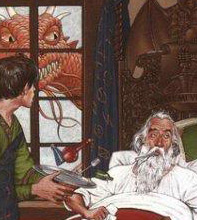It seems to me that 4e monster Hit Points don’t scale properly.
From examining the MM3 on a business card, we see that every level, monsters get +1 to hit, defenses, and damage. At level 1, they have about 32 HP, and they get 8 HP per level.
(From what I’ve seen, PCs tend to have comparable to-hit, defenses, and at-will damage. Of course, over the course of a fight, PCs are better than monsters, due to encounter and daily powers, feats, and other complications. In the simplest cases, though, PCs and monsters can stand in for each other.)
So what’s the problem? As far as I can see, the monster math above suggests that at higher levels, fights will drag on longer as monsters gain proportionally more HP. And indeed, in practice, I see this happening. I recently ran a level 30 adventure, and the fights took forever. Here’s why:
Take a level 1 monster. He has 32 HP. He (and his opponents) do an average of 9 points of damage per hit. That’s great! That means it will take about 4 hits to kill a monster. A highly damaging hit (a crit or encounter power) might bloody the monster in one hit. That feels exactly right to me. In fact, according to this excerpt from Player’s Strategy Guide, 4 hits per monster is the design intention: “Assume that your heroes can kill a typical monster with four successful attacks.”
At level 1, we are exactly on target. However, monsters gain 8 HP per level! That means, in order to keep up, the PCs (who should be able to kill a monster in 4 hits) need to increase their average damage by 2, every level. In order to stay on par, all level-30 PCs (leaders and controllers as well as strikers) would need to be doing about 70 damage per hit. There’s no way they can do that! The result? Monster HP outstrips PC damage.
Read the rest of this entry »










